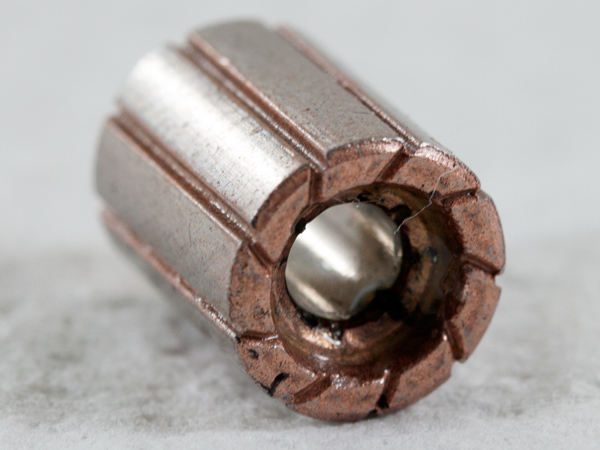PSUs 101: A Detailed Look Into Power Supplies
The objective of this article is to provide detailed information about the most crucial part of a personal computer (PC) system, its power supply unit. Follow us on this journey into PSU territory and we promise that you will gain valuable knowledge.
Other Bearing Types: SSO, Rifle, Hysint
SSO Bearing
Noctua enjoys increased popularity among enthusiasts due to its high-quality cooling products. The company's top fan models utilize a propriety bearing called a self-stabilizing oil-pressure bearing (SSO bearing), and Noctua says this bearing has a lifespan of up to 150,000 hours.





As you can see from the photos above, the external side of the bearing features a vertical groove that doesn't go all the way to the top. Besides hydrodynamic pressure, the SSO bearing also uses an additional magnet that provides enhanced stabilization to the rotor axis. This is essential during the start-up phase, when there is not enough dynamic pressure from the liquid yet to stabilize the shaft, so increased friction can occur.
Noctua's fans are used mostly in chassis and coolers, and we haven't seen them used in PSUs yet. However, since the company uses a very interesting bearing design, we thought that it would be best to include Noctua in this discussion.
Rifle, Hysint And Other Bearing Types
The Rifle bearing is an enhanced version of the sleeve bearing, offering a significantly longer lifetime, although it is still much lower than the lifespan of a fluid dynamic bearing. There are spiral grooves on the bearing that transfer or pump the lubricant oil from a reservoir to the whole bearing's surface, decreasing friction and noise output. Contrary to sleeve bearing fans, Rifle bearing fans can be mounted horizontally without any significant effect on their lifespan.










A high-quality Rifle bearing fan by Noiseblocker.
The Hysint bearing is used in fans made by Young Lin Tech. It shares many similarities with the Rifle bearing and includes similar vertical grooves, which allow the flow of the lubrication oil through the shaft. Nonetheless, a Hysint bearing's lifetime is significantly shorter than that of an FDB or an HDB, but still higher than a sleeve bearing, and it has no problem with horizontal installation.


There are other bearing types as well, like Enermax's Twister bearing that uses magnets instead of oil or balls to stabilize the shaft and reduce friction, Sintetico bearings by Y.S Tech with Teflon-coated surfaces and ceramic bearings.
Get Tom's Hardware's best news and in-depth reviews, straight to your inbox.
Current page: Other Bearing Types: SSO, Rifle, Hysint
Prev Page Fan Operation And Bearing Types Next Page Measuring PSU's Fan RPM
Aris Mpitziopoulos is a contributing editor at Tom's Hardware, covering PSUs.